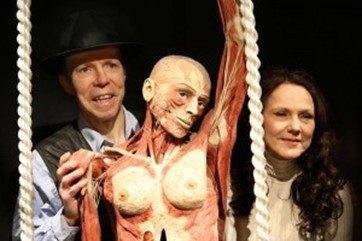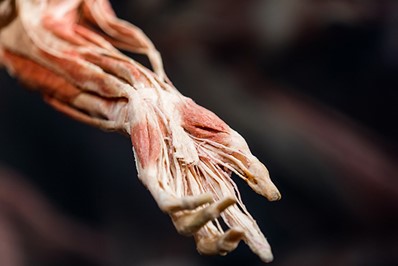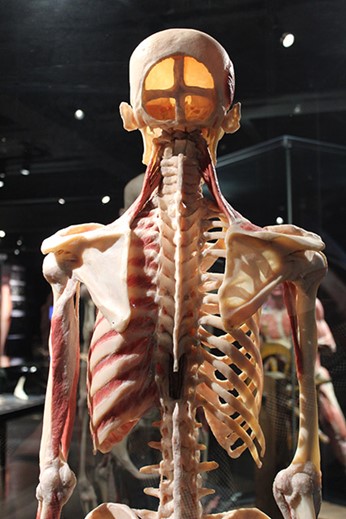Dr Gunther von Hagens is the creator of the BODY WORLDS exhibitions and the inventor of the pioneering plastination method. The exhibitions travel all over the world, with a permanent location in the centre of Amsterdam. How did BODY WORLDS start and grow into what it is? In conversation with the museum's father.
The German anatomist Dr Gunther von Hagens is world-renowned and has earned the nickname 'Doctor Death' for workingpeople up. His technique and the BODY WORLDS exhibitions made understanding what happens inside our own body accessible for all audiences.
How was the plastination technique invented?
Gunther von Hagens: "When I taught anatomy to medical school students in the 1970s, I had to use illustrated anatomy atlases and picture books to show the organs and systems of the body in an understandable way.
I also tried to use real human organs and specimens, but these were then kept in plastic blocks so you couldn't touch them or study the location of the organs correctly. One day, I realised that if this plastic was inside the body and not on the outside, the specimen would be rigid and easy to handle, allowing it to be studied and used."

How did the idea for BODY WORLDS come about?
"I was just trying to solve a problem, I wanted to educate my students so they would become better doctors. I don't think doctors should go poking around in your body or operate if they don't know the essentials of it.
But after I started plastering organs and specimens, something very unusual happened. The caretakers, secretaries and office workers at the university stopped by the laboratory more and more often because they were fascinated by the plastinates.
At that point, I started thinking about anatomy for laypeople, which is what BODY WORLDS ultimately is. It is very different from the anatomy practised by medical professionals, as it has to be interesting and dynamic, and should not cause fear."
How does Body Worlds get its bodies?
"Body Worlds consists entirely of bodies donated specifically to this project. Why do people donate their bodies to BODY WORLDS? People donate their bodies for plastination for various reasons: they want to leave something for later generations, they watch the decomposition and dissolution that accept after death, they confront and appreciate their own mortality, or they don't like traditional funerals."
Want to know more about the donor programme? Check out the Body-Donation programme, founded by Dr Gunther von Hagens, at the Heidelberg Institute for Plastination.
 At what age did the plastinates from the exhibition die?
At what age did the plastinates from the exhibition die?
"The individuals who donated their bodies to be plastinated with the intention of educating each of us about health died at different ages. Some of them were already old, others were still young and in their best years of life. Every person is different, not only on the outside, but also on the inside. I find it particularly interesting that, having worked as an anatomist for more than 30 years, I have never come across two identical hearts."
Around 20.000 people are currently registered as donors. With them in agreed that their identity and cause of death are not shown.
What happens to the skin and other remains that are not used in the exhibition?
"Every body is a treasure trove of anatomical information, remains should be treated with care and respect. All remains are therefore cremated and buried."
 How long does the plastination process take?
How long does the plastination process take?
Immediately upon arrival at the laboratory, the body is preserved ("embalmed") by injecting chemicals into the blood vessels and remains in this state for several months before being prepared and plastinated. The individual plastination steps are very labour- and time-intensive; on average, it takes two to three years for a donated body to become a plastinate.
"It takes a long time to complete a plastinate. For a whole body, it can take up to 1,500 hours. By comparison: I plastinated the world's first elephant with `Samba', which took two and a half years, or sixty-four thousand working hours converted. The elephant and other plastinates of animals such as the giraffe, the bear, the shark, the gorilla and the horse are part of BODY WORLDS: Animals Inside Out, an entirely new, self-contained animal world, which I created with my wife and curator Dr Angelina Whalley.
The world premiere of this exhibition took place in spring 2010 at the German zoo, where `Samba' died. The exhibition gives a never-before-seen insight into the inner life and respect of animals."
If you want to know more about BODY WORLDS, plastination and Dr Gunther von Hagens, visit Body Worlds 'The Hapiness project' in Amsterdam. Check out the FAQs on this website to find even more answers to your questions, or send us a message.

